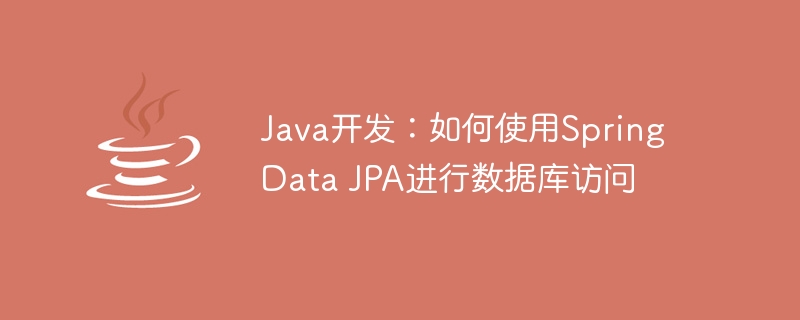

Java development: How to use Spring Data JPA for database access
Introduction:
In modern software development, interacting with the database is a very common requirement. Spring Data JPA is an important module in the Spring framework. It simplifies the database access process and allows developers to focus more on the implementation of business logic without paying attention to the underlying database operation details. This article will introduce how to use Spring Data JPA for database access and provide specific code examples.
1.1. Spring Boot project
Spring Data JPA is usually associated with Used together with Spring Boot because Spring Boot provides convenient features such as default configuration and autowiring. If you have not created a Spring Boot project, you can create a basic project structure through Spring Initializr (https://start.spring.io/).
1.2. Database configuration
Select an appropriate database according to project needs, such as MySQL, Oracle, etc., and configure the database connection information in the project configuration file.
<dependency>
<groupId>org.springframework.boot</groupId>
<artifactId>spring-boot-starter-data-jpa</artifactId>
</dependency>@Entity
@Table(name = "user")
public class User {
@Id
@GeneratedValue(strategy = GenerationType.IDENTITY)
private Long id;
private String username;
private String password;
// 省略getter和setter方法
}In the above code, the @Entity annotation is used to mark the class as an entity class, and the @Table annotation is used The associated database table name is specified, and the @Id and @GeneratedValue annotations define the primary key and automatic generation strategy.
@Repository
public interface UserRepository extends JpaRepository<User, Long> {
User findByUsername(String username);
}In the above code, the @Repository annotation is used to mark the interface as a repository (Repository), JpaRepository is the default implementation provided by Spring Data JPA. By inheriting it, we can get a set of common database access methods.
@Service
public class UserService {
@Autowired
private UserRepository userRepository;
public User getUserByUsername(String username) {
return userRepository.findByUsername(username);
}
// 省略其他业务方法
}In the above code, the @Service annotation is used to mark the class as a service (Service), through @AutowiredAnnotation is injected into an instance of the UserRepository interface, and then the methods provided by the interface can be called to access the database.
Conclusion:
This article introduces how to use Spring Data JPA for database access. By defining entity classes and Repository interfaces and using them in business code, we can simplify the database access process and improve development efficiency. I hope this article will be helpful to developers who want to learn to use Spring Data JPA.
Reference:
The above is the detailed content of Java development: How to use Spring Data JPA for database access. For more information, please follow other related articles on the PHP Chinese website!




